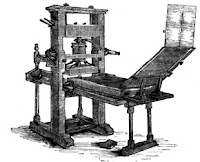Week 4 Blog

Week 4 Blog This week we learned about how science and technology has influenced medicine as well as the manipulation of our bodies. Starting from the very beginning, as some would call the intersection of art and science, many artists first became intrigued with dissection pertaining to anatomy. Dissection was very important for artists in order to make sure they were representing the body correctly. From the time of dissection during the Renaissance until the introduction of technology into hospitals in the beginning of the 20th century, technology has developed drastically in the field of medicine. Dissection during the Renaissance. As technology progressed, the perception of our bodies shifted. One major discovery that shifted our perception was the production and detection of electromagnetic radiation in a wavelength now known as x-rays by Wilhelm Conrad Röntgen in 1895. Since then, x-rays have...


